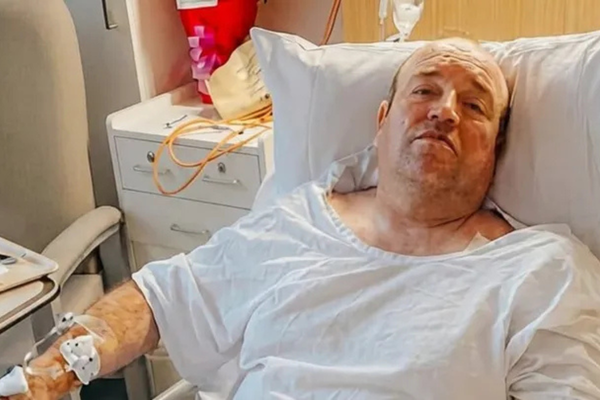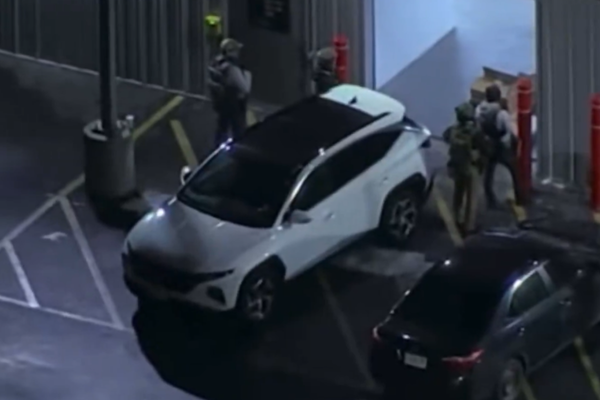
Your support helps us to tell the story
Israel unleashed its heaviest-ever bombardment of Gaza and a siege last October after Hamas attacked southern Israel, killing around 1,200 people and taking 251 as hostages, according to Israeli estimates.
Since then, Israel’s retaliatory bombardment of Gaza has killed almost 42,000 people, the majority women and children, according to the Palestinian health ministry. A further 10,000 are thought to be under the rubble and an unknown number have been taken into Israeli detention. Swathes of Gaza has been razed to the ground.
The Independent spoke to those inside Gaza about what they have been through over the last year.
‘I lost 11 people from my family’
Ziad Abdul-Dayem, 55, is a paramedic and ambulance driver. In November he spent 12 hours digging through rubble, trying to rescue nearly a dozen members of his family killed in an Israeli airstrike. He risks his life working day and night to pull survivors from collapsed buildings.
Just a few minutes after Ziad, an ambulance driver, had dropped his son off at the house where they were sheltering, he received an emergency radio call: the area had been bombed.
His son, also a medic, had finished a punishing shift at a hospital in Gaza City, treating the massive influx of wounded from Israel’s offensive. Ziad, whose family had been displaced from northern Gaza, had taken him to get some rest at a flat in Jabalia refugee camp. The extended family was temporarily sheltering there. Since Ziad was the closest ambulance to the bomb site, it was his job to try to rescue survivors.
“The house was bombed along with four others. I was digging for my relatives for 12 hours straight. They were all under the rubble,” he tells The Independent in despair.
“I lost 11 people from my family, including my son, my daughter’s husband, and their children.
“The pain and shock were indescribable.”
He tried to bury them in the local cemetery, but the intensity of the bombing made that too dangerous. So, he had to bury his family in a mass grave dug with an excavator next to the nearby Indonesian hospital. After that, he says, there was no reason for him to stay in northern Gaza, so he fled south and continued working there.
He says the biggest struggle paramedics and ambulance drivers face is being shot at and bombed while trying to get to a scene, along with the lack of fuel preventing them from even reaching the injured. There are days when they have to use donkey carts and tuk-tuks to transport the wounded.
“Worse than that, there are injuries that are difficult to extract from under the rubble. We do not have the equipment or capabilities to reach those still alive beneath the debris,” he continues.
“This is a great tragedy and an obstacle we face often. The injured are alive but die under the rubble because we can’t get them out. We sit and cry. We want to help, but sometimes we cannot.” Ziad has personally lost 10 colleagues, all ambulance drivers, since Israel began its offensive. Israel denies targeting healthcare facilities but the World Health Organisation (WHO) estimates since October 2023, there have been hundreds of attacks on healthcare in Gaza, resulting in 765 deaths.
One of Ziad’s colleagues was fatally wounded while sitting in the same vehicle next to him. “He was hit by shrapnel that sliced off his hand directly,” Ziad says. Now, he feels he has nothing left to live for but his work. “I have no home, no shelter, and little family left. This has pushed me to work all week long, always with the ambulance, working 24 hours a day.
“All I wish is for this war and this tragedy to end. What we have lived through is enough,” he adds.
‘Not being able to return to your home is the hardest feeling’
Nedal Hamdouna, a journalist from north Gaza, has had to flee his home and places of shelter five times in the last year. Israeli airstrikes have killed several family members. Despite this, he continues to work from a tent, with little access to food and water.
If Nedal, 36, had known the Israeli military intended to cut Gaza into two parts, he says he wouldn’t have left his beloved home in the northern part of the Strip a year ago. He lived in Beit Lahia, a town whose adjacent fields were once famous for Gaza’s lush strawberry crops.
But after fleeing bombing and bullets with his family five times, he now lives in a tent in what Israel calls the “humanitarian zone” in al-Mawasi coastal region. In reality, it’s a beachside wasteland packed with tens of thousands of civilians, which has also been bombed multiple times.
Nedal has no idea when the next flyers will fall from the sky ordering him to move again, when the bombings will start, or how long it will be until he is ever permitted to go home – if his home is still standing.
He keeps working despite the dangers.
“Not being able to return to your home is the hardest feeling you’ll have every day. Our home is only a few kilometres away, and yet you can’t return,” he says, the pain creeping through his voice in a message sent to The Independent.
Gaza is the deadliest place on earth to operate as a journalist. Israel has repeatedly denied targeting media workers. But the Reporters Without Borders organisation says that since October 2023 more than 130 journalists have been killed by Israeli forces in Gaza, at least 32 of them while working.
The Committee to Protect Journalists says the number is so high that more journalists were killed in Gaza in the last 10 weeks of 2023 than have ever been killed in a single country in an entire year. Nedal keeps working despite the risks. He speaks of how last time he fled from within the so-called humanitarian zone two months ago, Israeli quadcopters were overhead. “The bullets penetrated the tents, and dozens were injured. Many were killed in the area as it was suddenly close to the Israeli operation area, but there were no orders to evacuate. It forced us to flee without taking anything.” He says he saw “scenes of pain, fatigue, fear” on repeat, with most people running with nothing.
“The streets were crowded, and many were waiting for a car or a donkey cart. I got in the car but had to get out and continue walking with my family, as walking was faster. There is no fuel. People were in the streets with no idea where to go.” When the operation was finally over, he saw the tents were riddled with bullet holes, and some of their remaining belongings had been stolen.
“In this war, we have lost many relatives, neighbours, and friends. I even lost my aunt, who was shot while she was in her tent in Deir al-Balah just two months ago,” he tells The Independent.
Another major problem is the shortage of food and water. The price of food is exorbitantly high. Vegetables are now 10 times as expensive as they were before the war. A kilo of tomatoes has now reached nearly $10 ( nearly £8). Prices are unstable.
“Most people live on canned food,” he explains, adding that they cook on a fire, but finding firewood is sometimes impossible.
“It is a tiring day in every single detail. Every time you are forced to flee, you have to figure out how to get clean water to drink and where to build a tent... Even the cost of a tent is four times higher than the normal price. Every time you are displaced, you bear the cost of transporting your things.
“Life in a tent is difficult. You face extreme heat in the summer and cold in the winter,” he adds.
Despite all of this, Nedal continues working, reporting on Gaza from his tent. He works every day, trying to find a way to charge his phone or connect to the internet. He is dedicated to getting the stories of everyday people in Gaza out to the world.
“I only dream of returning to my home and checking on our belongings. Its value is more than material. I don’t have enough words to express how much pain we feel.”
‘You arrive at the hospital tired and exhausted, and then start working immediately’
Dr Musa AbuJarad is a paediatrician who was forced to flee northern Gaza when food ran out and the bombing intensified. He later escaped Al-Najjar Hospital in Rafah when Israeli forces took control of the area. Dr AbuJarad has had to assist in performing surgeries without anaesthetic amid a lack of supplies.
On most days, Dr AbuJarad and his colleagues face impossible dilemmas: saving a dying patient’s life often requires performing surgery without anaesthesia.
They also have to decide who from a group of wounded patients to treat, as there are never enough supplies to help all.
“When you are weighing whether one person’s chance of survival is greater than another’s, you just have to deal with it,” he says grimly.
Dr AbuJarad began the war as a paediatrician at Kamal Adwan Hospital in northern Gaza City, but he evacuated south after surviving on just a few pieces of bread a day.
“We fled to the south, escaping death, searching for survival, for better living conditions, and for food,” he says. He describes that journey as one of the most terrifying moments of the war. Some of his colleagues were detained by Israeli forces along the way; he has no idea what happened to them. Others were killed.
“We didn’t know whether the shooting was at us or someone else. We didn’t know if we would be taken or not. Even those who were taken by Israeli forces right in front of us– we still don’t know what their fate is. Are they alive? Imprisoned? We have no idea,” he says.
The WHO estimates that at least 214 medics have been detained by Israeli forces while on duty since the war began, the whereabouts of many are unknown. Israel has accused Hamas militants of using hospitals as military bases or command outposts – a claim vehemently denied by the Palestinian health ministry and refuted by international aid and human rights organisations.
Half of Gaza’s hospitals are now only partially operational, adding immense pressure on medics. Dr AbuJarad moved to Rafah, the southern border town near Egypt, where hundreds of thousands of Palestinians had also fled. At Al-Najjar Hospital, he tried to treat a relentless stream of patients injured across the strip, while medical and food supplies dwindled. “We were working almost 24 hours a day. We didn’t rest,” he says.
Then Israeli forces took over Rafah and they had to evacuate the hospital. The whereabouts of some staff members who remained behind to care for patients are unknown. Now, Dr AbuJarad works at a hospital in Khan Younis. He walks half an hour to get to work, hoping to hitch a ride from a truck, car, or tuk-tuk.
“It’s up to you and your luck. The road is difficult, and you arrive at the hospital tired and exhausted, and then start working immediately,” he says.
“There are not enough medications, especially painkillers, whether in pharmacies or elsewhere. Our people are living in difficult conditions, which cannot be described.”







